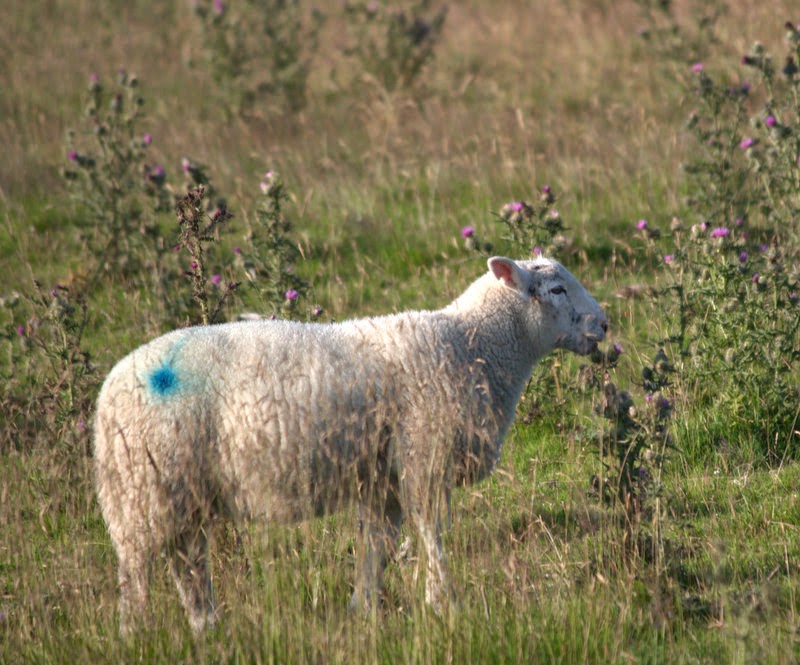Good news that there is a decent small area of Bog Asphodel thriving, as yet untrashed by cows, not as splendid as the once magnificent scene, but there nonetheless; we must be grateful.
The bad news is that the cows were seen wandering off that direction early this morning.
It's good news that some flowers can be found in the sheep enclosure of this 'nature reserve', as they choose to call it. It's less good news that the varieties found are severely limited compared to what might be found when no sheep have been in occupation. Some years ago I called the high ground here Thistle Hill and I see no reason to change that. Being one of the few plants sheep don't eat gives it an advantage. Some sheep now want to change that.
Today I could see no Sneezewort nor Vetchling nor Orchid and very little Harebell. These and others should be here. Clover is present of course and Lesser Stitchwort in one or two places, cowering away lest the all-devouring woollies might spot them.
But thistles are interesting if there's little else to admire. Spear Thistle has its points, as they say, and were it less common might be valued in the herbaceous border. But I sometimes wonder if the person who first christened the Creeping Thistle ever had second thoughts. It's the tall erect one in the picture below.
Thistles reminds us of an unexpected resident plant that can be seen on Blacka, namely the Melancholy Thistle whose flowerhead seems dejected at early stages. It must indeed be the plant dominating the edges of the 100 Acre Wood where Eeyore spent his gloomy days. Actually its most favoured place in the Peak District is the limestone dales. Blacka is hardly the place you would look for it but the past practice of using limestone in road construction means that the area below the boundaries onto the A625 have become a more calcareous habitat and some flowers found there are not at all typical of the rest of Blacka. Among these is Vetchling .....................
.... and Meadow Cranesbill, both very common on roadside verges in the White Peak but not so common here.
Teachers of botany who want to show students the differences don't have far to come out of Sheffield to see flowers that prefer less acid conditions. But they will be less than pleased if cows have trashed the Melancholy Thistle. I've not seen it this year and cows have certainly been around.









No comments:
Post a Comment